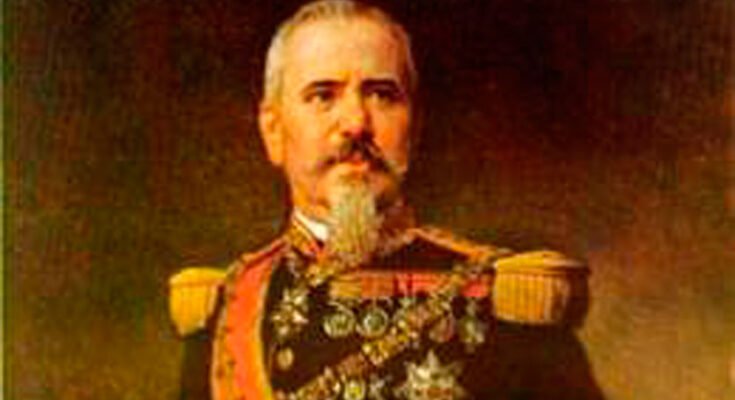Arsenio Martínez Campos (1831-1900) was one of the most politically significant military officers during the first stage of the Restoration. Stationed in Cuba between 1862 and 1872, he fought against Carlism after the establishment of the Republic in 1873. On December 29, 1874 he was at the head of the troops that proclaimed Alfonso XII King in Sagunto.
He continued his fight against the Carlists and reached the rank of Captain General. After occupying, once again, a post in Cuba, he returned to Spain to form a government in 1879, reserving for himself the portfolio of War, which he directed again in 1885, with Sagasta.
He then held various military posts in North Africa and Cuba, from where he returned shortly before the outbreak of the war. In 1895 he was appointed President of the Senate, making the nineteenth number, a position he held at his death, which justifies the presence of this bust in the collection.
The character, with an emphatic gesture and resolute attitude, underlined by an accurate gaze, is represented as a bust with hands, which is a significant variant of the traditional typology. This element, together with the prodigious translation to marble, with the greatest virtuosity, of all kinds of military decorations and details of the uniform, contribute to distance the conception of this bust from the traditional typology, of an abstract nature, which had been used throughout the history of art.
On the contrary, the gesticulating attitude of the General, with such a pronounced expressiveness in his hands, refers us rather to a fragmentary representation, suggesting the existence of a theatricalized reality.
It has been assumed that the Board of Internal Government of the Senate commissioned Benlliure to paint a bust of General Martínez Campos when he was President of that legislative Chamber, that is to say, between 1899 and 1900. If so, it is strange that Benlliure did not make a plaster model until 1908, the year in which the polychrome plaster that is kept in the Army Museum in Madrid is supposedly dated, and, stranger still, that he did not carry out the definitive work, in marble, until 1917, as is indicated on the pedestal.
This more complex typology of bust with arms, which almost constitutes a half-body statue, was precisely used by Benlliure himself in another contemporary work, the bust of Sorolla with hat (1916, Valencia, Municipal Museum) and in the bust of Matilde Benlliure (1918, private collection). On the other hand, Benlliure had made in 1907 the monument to Martínez Campos, located in the Retiro Park in Madrid (Text by Carlos Reyero Hermosilla, in the book “El Arte en el Senado”, edited by the Senate, Madrid, 1999, p. 492).

